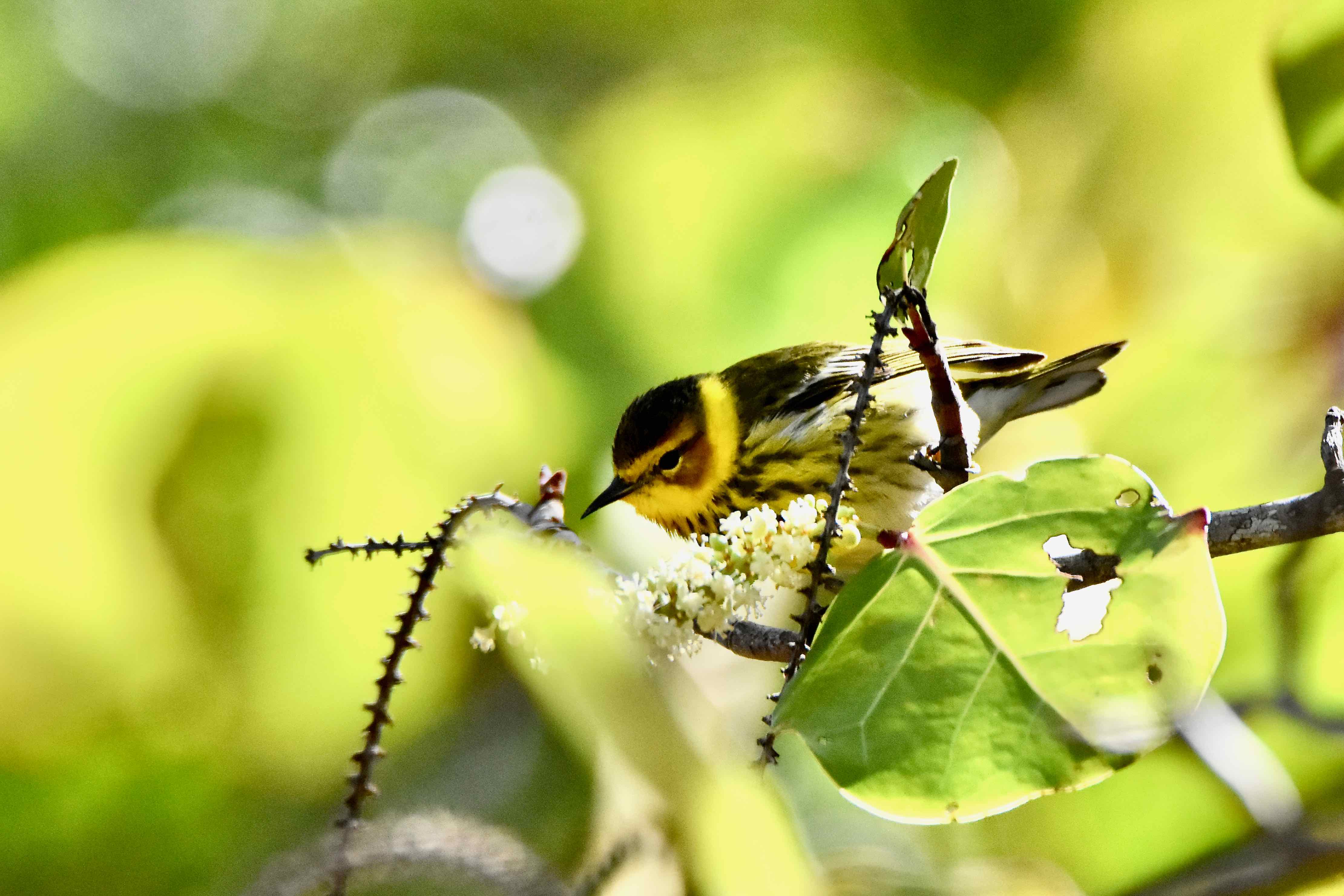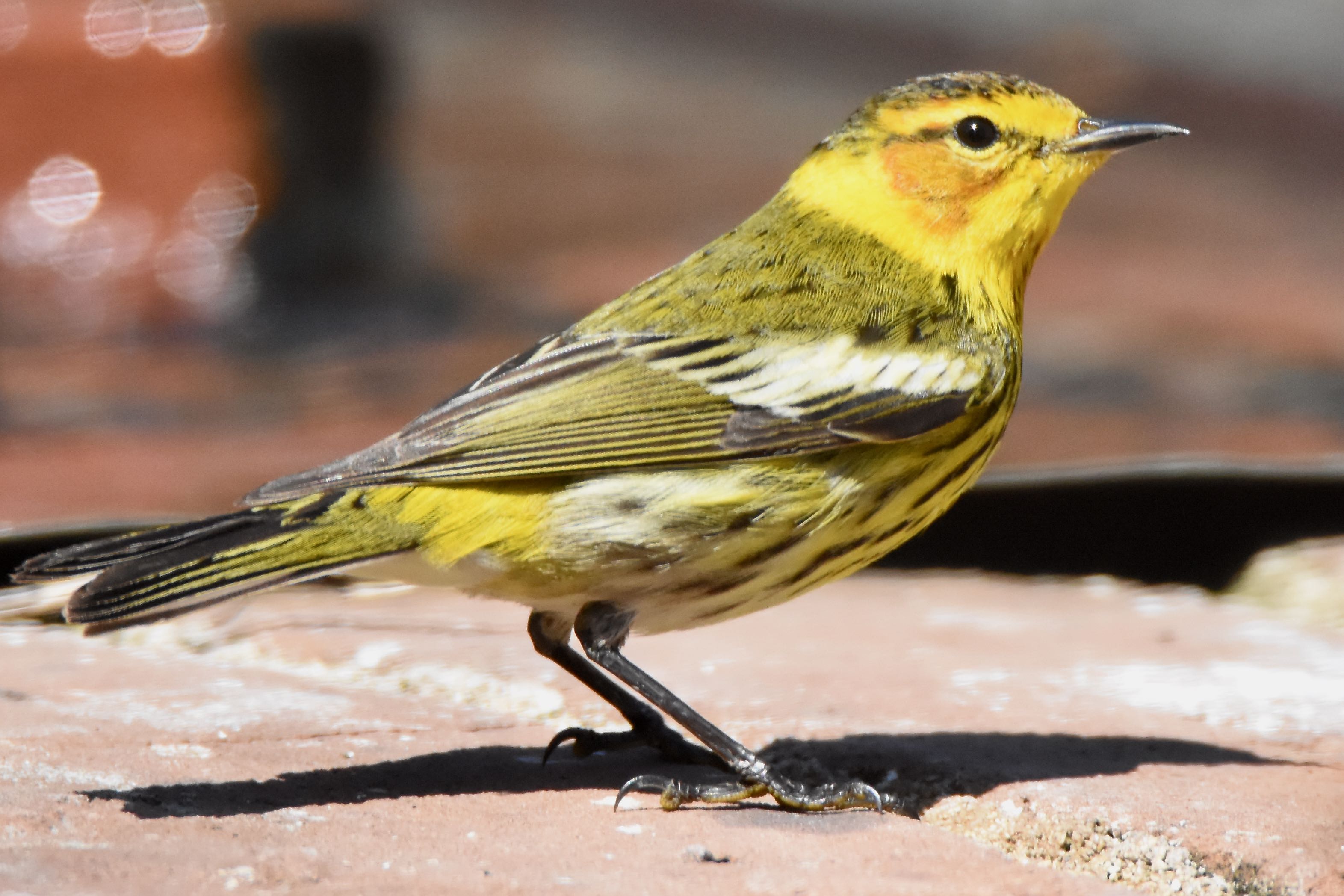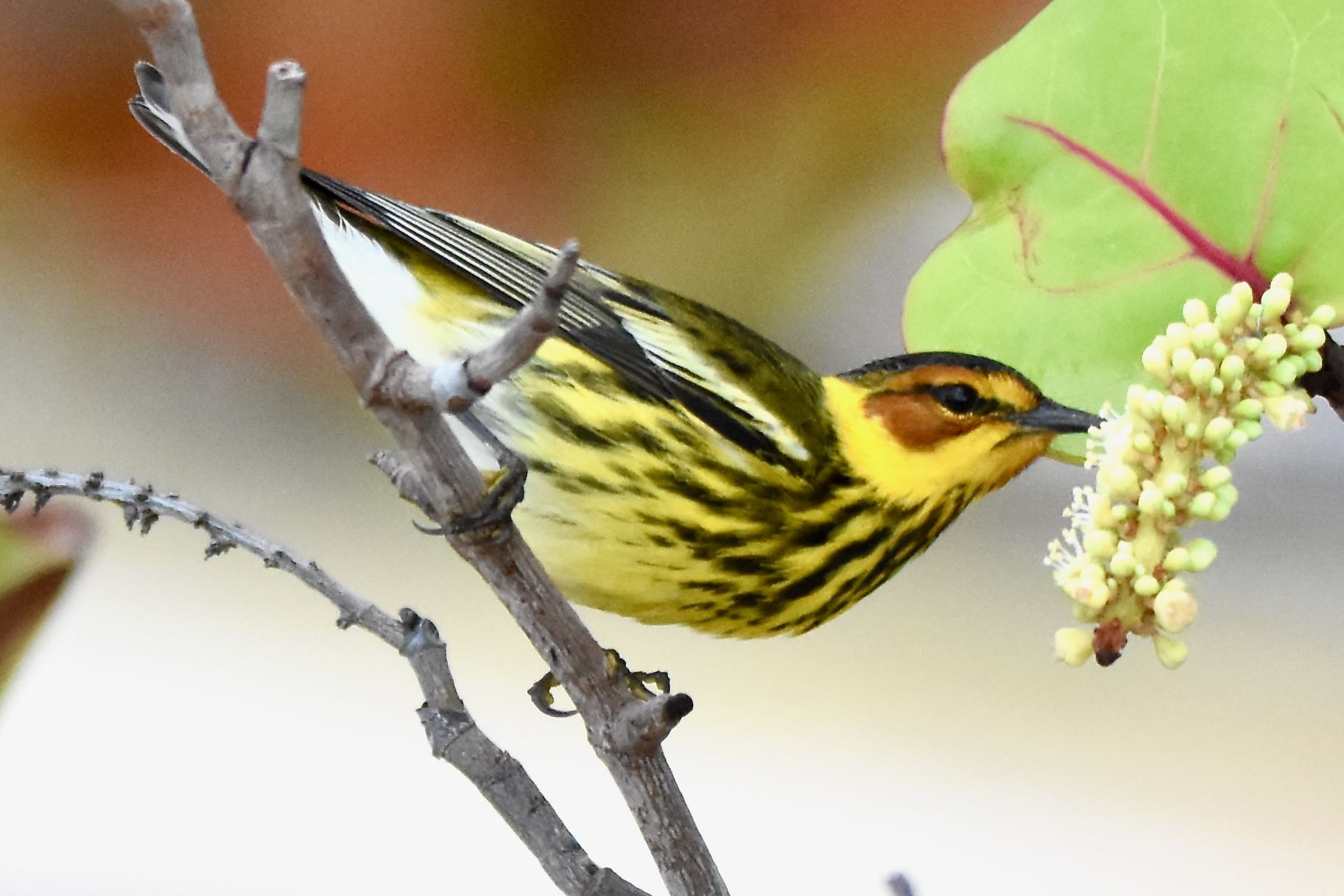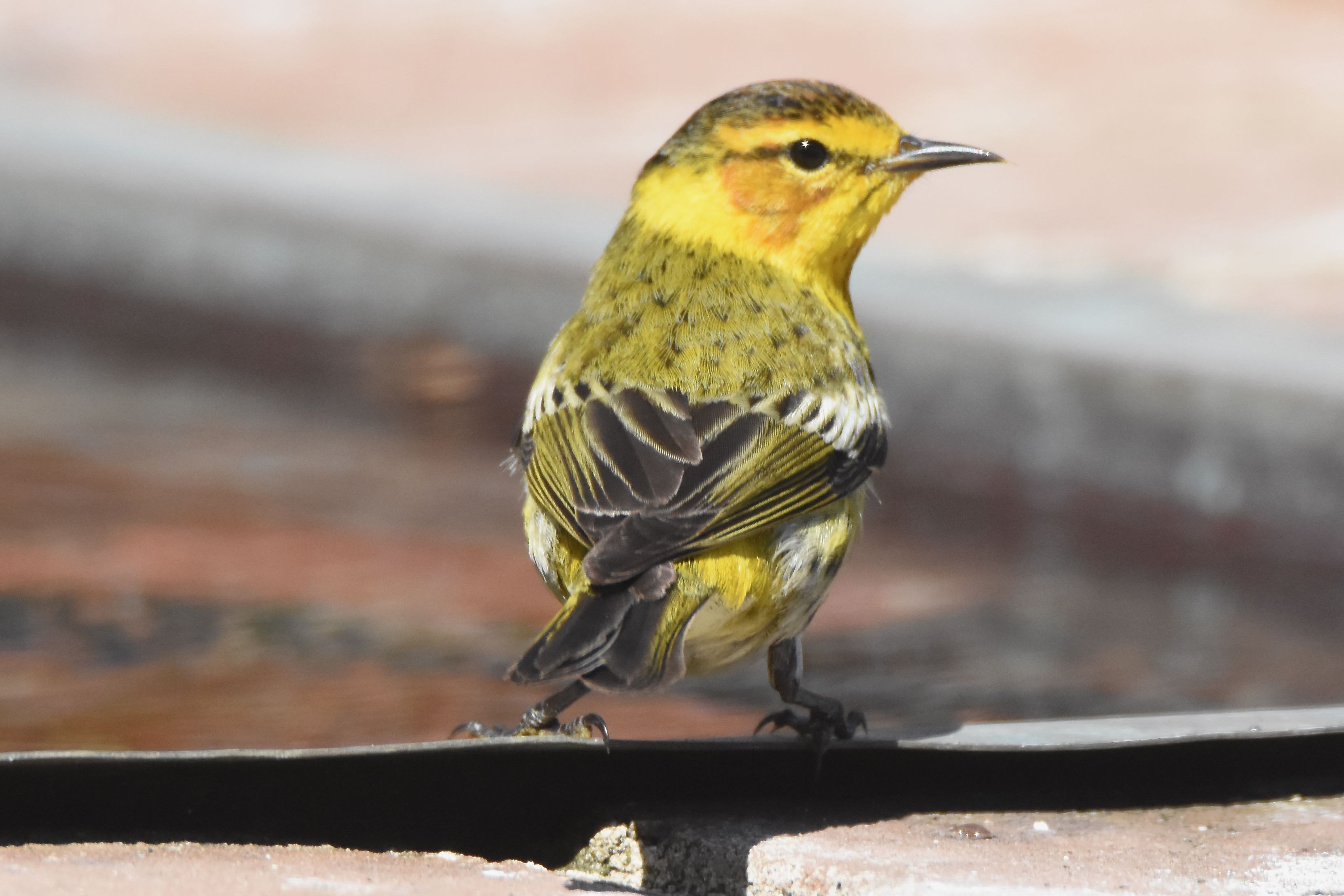
Cape May warbler, photographed at Garden Key, Dry Tortugas National Park, Monroe County, in April 2017.
This is a bird busy on its way to someplace else. The Cape May warbler, Setophaga tigrina, visits Florida regularly during its biennial comutes but its stay in the Sunshine State is usually brief.
Home for the Cape May warbler is not anywhere near namesake Cape May, N.J., but well north in the old growth conifer forests of Canada and Maine. It is a migratory bird, occasionally seen throughout most of the eastern United States, including Florida. During migration, it is commonly seen in South Florida,and its color pattern, particularly the rust-red eyepatch, make it easy to identify.
The Caribbean, Central America and parts of Venezuela are its winter-time homes.
Its favorite food is the spruce budworm (Yum!) but it will also eat other bugs; in winter and in migration it will drink nectar either from flowers or by piercing fruit and slurping up the sugary goodness with its curled tongue. While it hangs out in the woods during the summer, it's less picky about its digs than it is in other parts of the year.
According to Cornell Laboratory of Ornithology (link below), one Alexander Wilson, considered America's greatest ornithologist before James Audubon, first described this bird after spotting it in Cape May. Thus came about the name, Cape May warbler. Wilson wasn't sure whether the bird was a summertime resident or just passing through, according to his book, American Ornithology, published in 1828, some 13 years after his death. In fact the warbler wasn't seen in its namesake locality for 100 years after Wilson's spotting.
Not a lot is known about this bird. It goes about four or five inches in length, with a wingspan that can hit 9 inches. In spring and summer, males are brightly colored, with a yellow-orange face and a rust-brown patch around the cheek and eye, and a black line through the eye. The breast and underparts are striations of yellows and browns and blacks. The wings have a large white bar. But it is really that reddish patch on the face that identifies this bird. In fall and winter, the colors tone down. Females and juveniles are olive-grays and pale yellows.
Your basic Cape May nest is a small cup made of moss, twigs and other material lined with hair and feathers. Females lay clutches of between four and nine eggs.
Its population tends to yo-yo based on the availability of its favorite food, the budworm. Insecticides and logging are major threats, however.
It is a member of Parulidae, the warbler family.
Garden Key, Dry Tortugas National Park



